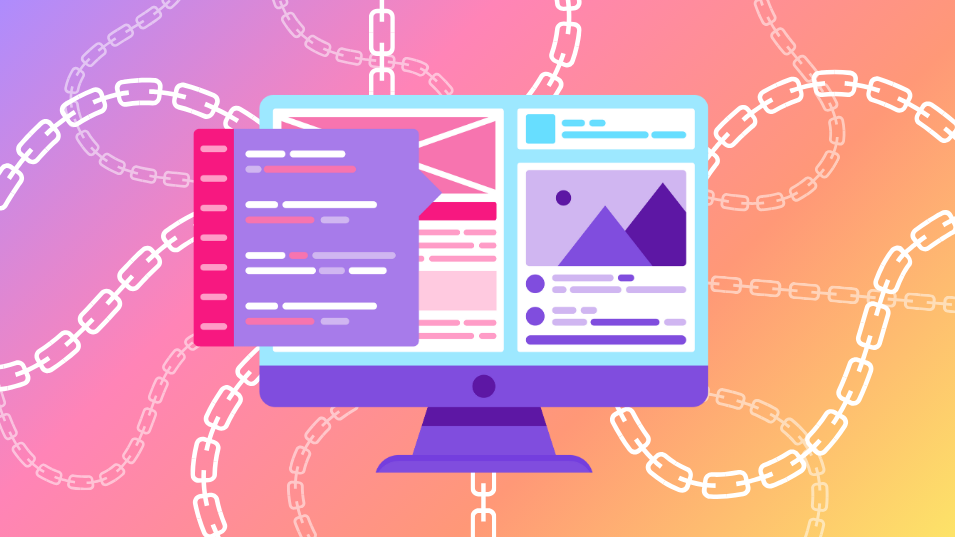
29 Jan SEO Tips For Internal Linking
Uploading content regularly and ensuring your meta titles and descriptions form part of your SEO checklist may help build an effective SEO strategy. Still, there is one SEO element that gets none of the glory but does most of the work – internal linking.
Internal links are a vital part of any successful SEO Strategy. While it may seem like a tiny detail that you can brush over, it’s actually a vital way for users to navigate your digital content and provides search engine crawlers with the necessary information about your website.
There’s no doubt that internal links do some heavy lifting when boosting your SEO, but what is it, why is it important, and how can you implement it?
What are internal links?
Internal links are hyperlinks that point to another page on the same website. These are not the same as external links, which point to a different domain or website. As mentioned before, internal linking is a great way to assist users with navigating your website and should consistently be implemented if you have more than one webpage on your website.
Let’s say you are a tour operator offering tours across South Africa, and you have an About Page describing who you are and what you do. To help lead readers to other pages or blog posts on your website, you might include a sentence about “hiking tours in Cape Town” and hyperlink this to a recent blog post you have written about Cape Town hiking trails.
When search engine crawlers can index more content on your website, it allows you to rank better. Here are a few more reasons internal linking is important:
Improved User Experience: Internal links make it easier for visitors to navigate your website. When done effectively, they help users find related or relevant content on your site, enhancing their overall experience.
Engagement and Retention: By guiding visitors to other pages with valuable content, you can keep them engaged for longer periods. This can reduce bounce rates and increase the time users spend on your website, which is a positive signal to search engines.
Enhanced SEO: Search engines like Google consider internal links when crawling and indexing your website. When you link to other pages with relevant keywords and anchor text, it helps search engines understand the structure and hierarchy of your content, potentially improving your search engine rankings.
Reduced Bounce Rate: When users find what they’re looking for through internal links, they’re less likely to leave your website immediately (bounce). This can help lower your bounce rate, which is a positive metric for user engagement. This can also help boost leads and conversions.
Tips for using internal links:
Use Descriptive Anchor Text:
Anchor text is the clickable content that you will use for a link. It’s important to remember that this text will be used to tell Google what your page is about, so using generic terms like “click here” or “read more” is not going to cut it. Make sure your internal links use descriptive anchor text that accurately reflects the content of the linked page.
Limit the Number of Links:
Don’t overdo it with internal links. Too many links on a page can be overwhelming and may dilute the SEO value of each link, which can negatively impact your SEO. Aim for a reasonable number of links per page, making sure to link to relevant older content to help refresh your old content in the eyes of Google.
Try to Link to High-converting Pages:
Whether it’s a compelling blog post or a product page with powerful CTAs, it’s always a great idea to link to pages that convert. While climbing the SEO ladder is always valuable, this can be a great example of how internal linking can be a money magnet too. However, you need to ensure you’re linking to the right pages.
Create a Hierarchical Structure:
Organize your content hierarchically. Your homepage should link to key category pages, which in turn link to specific articles or product pages. This helps search engines understand the structure of your site.
Content is King:
We’ve all heard the phrase, “Content is King.” This simple phrase has never been more relevant than when talking about internal linking. The more content you have, the more healthy internal linking structures you’re able to create. While linking to your homepage or About section may provide some relevance to your user, it won’t do anything for your SEO score. However, linking to valuable content, such as blog posts, is a great way to create an internal linking strategy that works.
While utilising an internal linking strategy can be a great way to boost your SEO, it can be overwhelming and time-consuming. If you’re looking to create an effective SEO strategy that takes all of the above into consideration while also including some creative juice and SEO prowess, speak to one of South Africa’s leading Digital Marketing Agencies! From creating an SEO strategy that boosts conversions to helping you find the right words, we’re ready to help you!
Originally posted 2023-10-11 17:09:58.
